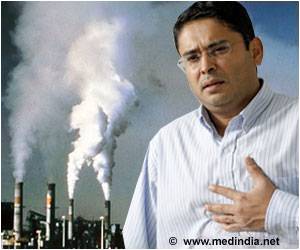
‘For every 10 microgram per cubic meter of increased exposure to PM2.5, the risk of dying from any cancer rose by 22 percent.
’
Tweet it Now
How the Study Was Conducted: Thach, Thomas and colleagues enrolled 66,280 people who were age 65 or older when initially recruited between 1998 and 2001. The researchers did not have data on whether they had cancer before they were enrolled. Researchers followed the study subjects until 2011, ascertaining causes of death from Hong Kong registrations. Annual concentrations of ambient fine particulate matter, or matter with an aerodynamic diameter of less than 2.5 micrometers (PM2.5), at their homes were estimated using data from satellite data and fixed-site monitors. Researchers adjusted for smoking status and excluded deaths that had occurred within three years of the baseline to control for competing diseases.
Results:
The study showed that for every 10 microgram per cubic meter of increased exposure to PM2.5, the risk of dying from any cancer rose by 22 percent. Increases of 10 microgram per cubic meter of PM2.5 were associated with a 42 percent increased risk of mortality from cancer in the upper digestive tract and a 35 percent increased risk of mortality from accessory digestive organs, which include the liver, bile ducts, gall bladder, and pancreas.
For women, every 10 microgram per cubic meter increase in exposure to PM2.5 was associated with an 80 percent increased risk of mortality from breast cancer, and men experienced a 36 percent increased risk of dying of lung cancer for every 10 microgram per cubic meter increased exposure to PM2.5.
Advertisement
Thach and Thomas indicated possible explanations for the association between PM2.5 and cancer could include defects in DNA repair function, alterations in the body's immune response, or inflammation that triggers angiogenesis, the growth of new blood vessels that allows tumors to spread. In the case of the digestive organs, heavy metal pollution could affect gut microbiata and influence the development of cancer, the authors added.
Advertisement
"The implications for other similar cities around the world are that PM2.5 must be reduced as much and as fast as possible," he said. "Air pollution remains a clear, modifiable public health concern."
The authors added that the large scale of their study, as well as its documentation of cancer-specific mortality, adds to the IARC's report on the contribution of particulate matter to various cancers.
Study Limitations:
Thach said a limitation of the study is that it focused solely on PM2.5. He said emerging research is beginning to study the effects of exposure to multiple pollutants on human health. He also cautioned that pollution is just one risk factor for cancer, and others, such as diet and exercise, may be more significant and more modifiable risk factors.
Source-Eurekalert










